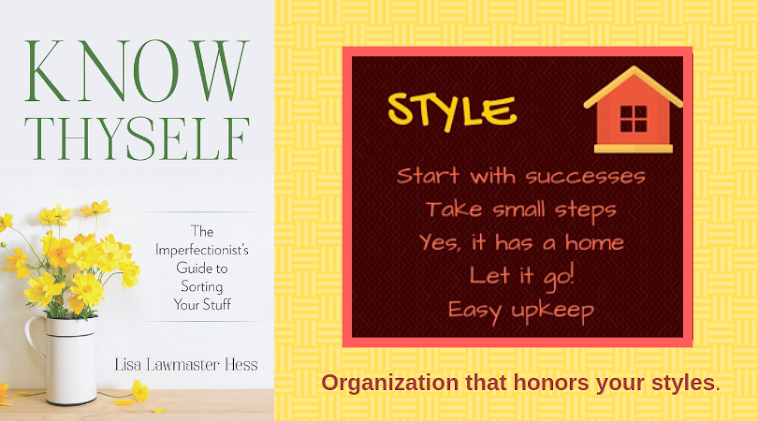True confession #39: I respect professional organizers, but I don't always agree with them.
As a voracious reader on the topic of organization, I've seen many of these tips before. Because I know organizing by STYLE works for me, I did what I always do when I read one of these articles. I put all ten of them through my I need to see it/drop and run filter.
1. Books you won't read again. Agree. Sometimes I'm successful in putting a book directly into the giveaway pile when I finish it. Other times, they languish on my shelves, taking up space until I either run out of space or review my choices in my annual Christmas purge. Either way, they go into a bag I can take to my local library, which accepts book donations -- at least when we're not in the midst of a pandemic.
2. Clothes you or your family has outgrown. Agree. Consign, sell or donate the best, toss the rest.
3. Movies and music on CD, DVD, or anything else. Agree to disagree. The article recommends going digital (good plan) and/or replacing the cases with less bulky storage. Whether or not the latter suggestion makes sense depends on the size of your collection, your storage space and, of course, your styles. While I can't argue that there are more streamlined solutions than plastic cases, I will argue that, right now at least, my storage for these items works for me and my styles and protects my investment without intruding into my home.
4. Old, expired canned good. Completely agree. In addition, this is a great starting point because the decision is black and white. Something either is expired or it isn't.
5. Obsolete gadgets, electronics, and appliances. Agree. For these items, the question is where to take them. Most of ours end up at
Best Buy, which has recycled pretty much everything we've ever wanted to get rid of. If you'd like to do more than recycle your old cell phone, programs like
Cell Phones for Soldiers and
Recycling for Charities recycle the technology for a cause, and some carriers will buy back your cell phone or use its value toward the purchase of a new one. If you're disposing of electronics, always check local regulations to see what can and cannot safely go into the trash.
6. Papers, please. Agree and disagree. As someone with an I need to see it personal style, I struggle to find the sweet spot between hard copies and electronic copies. When it comes to some things, I will always be a paper girl.
7. Faded photos. Agree. While I'm not advocating a purge of photo albums (nor was the article), I know that tossing just duplicate, out-of-focus, and "who is this person?" photos would significantly reduce my photo pile. Here again, the battle between printed photos and digital copies at my house is ongoing.
8. Knickknacks and doodads-a-plenty. Agree...kind of. This one hits home for me. While part of me longs for clear spaces, the rest of me is sentimental enough to hang on to all kinds of things others would part with in a millisecond. As with anything else, duplicates (how many key rings or magnets do I really need?) and anything that takes up space without also meaning something to its owner can be the first to go.
9. Large, oversized furniture. Agree to disagree. For me, the comfort factor outweighs the space factor. I'd toss our dining room chairs in the trash before I'd get rid of the chairs from my parents' house -- the ones that are living in the basement because there's no room in our living space for them. Definitely not logical on some levels, but when I finally sit down to relax, I want to be comfortable.
10. Anything else that's not nailed down. Agree. The writer went on to explain this as a catch-all category, rather than a literal suggestion, citing the "when's the last time this was used?" argument -- a valid question, even if it's not the only criteria for hanging on to something or getting rid of it.
How did these tips fare in your style filter? While they're a great starting point for anyone looking to tackle the L of STYLE ("Let it go!"), the suggestions in articles like these they won't fit every style. They can, however, provide us with the nudge we need to start somewhere.
And that's often the hardest part of the process.













